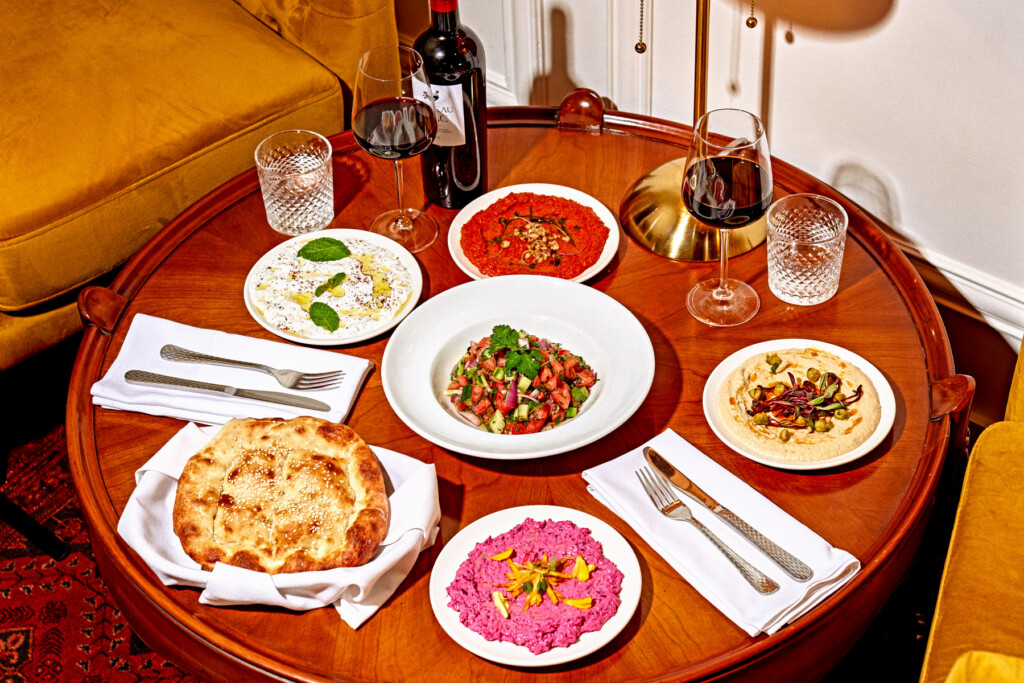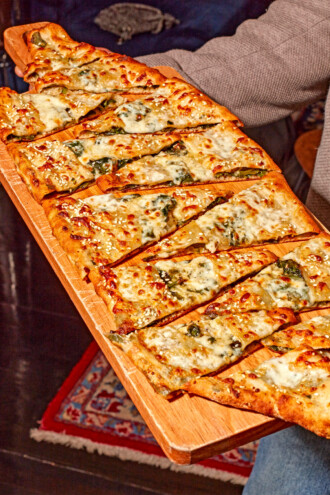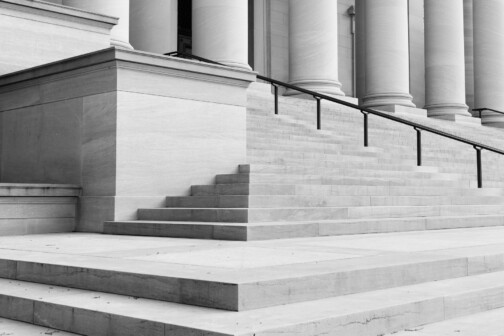Let’s begin with the house. Its sturdy two stories, all dressed in white, stand at the top of a slope along Zang Boulevard, just north of the Bishop Arts District. It was built, the current owners believe, in 1910. That date is unverified but easy to believe because of the structure’s high ceilings, wide doorways, and centerpiece staircase. You can step from room to room, through the wide-open frames, and imagine what might have been here a century ago. From upstairs, you can look out the windows and see the full downtown Dallas skyline.
Until recently, the house was in disrepair for many years. Its most notable resident was George Sergeant, mayor of Dallas from 1935 to 1937. At the time, the mayor was elected by city council members, not the public, and Sergeant’s tenure was not exactly crowned with glory. His main priority was banning married women with employed husbands from government jobs. (In the Great Depression, it was thought greedy to have two moneymakers under one roof.) When Franklin Roosevelt visited town, the president joined Sergeant to unveil Dallas’ latest civic pride: a statue of Robert E. Lee on horseback. (That same statue was removed from Lee Park, now Turtle Creek Park, in 2017.)
When Sergeant died in 1971, the house was left to his son, who died in 2009; in 2011, the real estate firm Jim Lake Companies bought the building. The house was in tragic shape. Old Google Street View images tell a bleak story about Sergeant’s former home: windows boarded up, the eye-catching two-story pillars on the front porch tilting in different directions, the roof sagging at the corners.
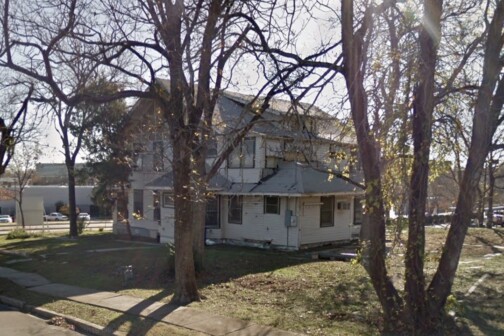
Then came years of transformation, as the structural problems were addressed and life returned to the premises. One group of restaurateurs attempted to set up shop in the house, hiring chef Graham Dodds (Bolsa, Hibiscus) to run the kitchen. The venture failed; Dodds now lives in New Mexico.
Just after Thanksgiving, the home finally opened its doors to the public after more than a decade of anticipation. Its white walls are stately but friendly in the warm evening light. The wood floors have a satisfying creak. The rooms are perhaps not so different from something that Sergeant would have recognized. The bar even has his framed college diploma. But look closely at the beautiful, slightly faded rugs, and you’ll understand that this is a Dallas landmark of a slightly different sort. It is a symbol of the changing faces in our city.
The mayor’s old house is a Turkish restaurant now.
The menu and leadership come from North Dallas spot Selda Mediterranean Grill, which opened at the peak of the coronavirus pandemic and succeeded in winning the affection of its neighbors. Selda is practically an institution now. When its original location closed temporarily following a kitchen fire, hundreds of loyal patrons packed the dining room for weeks after its reopening. Now Habip Kargin, one of Selda’s chef-owners and a former leader of the now-closed local chain Pera, has made the move south, along with partner Mert Tezkol. This new venture is called The Mayor’s House by Selda; the restaurant’s landlords asked that its name nod to the building’s history.

Co-owners Habip Kargin (left) and Mert Tezkol teamed up to bring delicacies such as spinach-and-salmon pide to Oak Cliff.
Brittany Conerly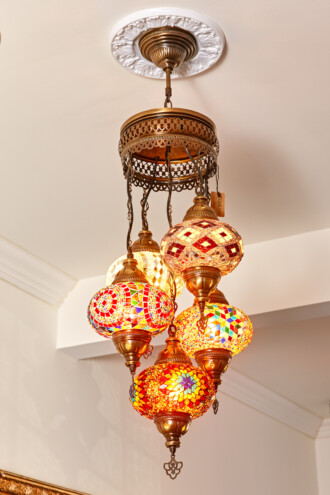
This historic Dallas mansion looks striking with new Turkish decorating features on an elegant white backdrop.
Brittany ConerlySince Pera closed its Uptown wine bar about seven years ago, Dallas hasn’t had any top-notch Turkish food south of I-635. (Cafe Izmir is mediocre; Ephesus, on Central, has better food but an old-fashioned atmosphere.) But the location of The Mayor’s House by Selda is not its only unusual feature. Its menu showcases traditional home-style cooking and crisp flatbreads.
Let’s start by describing the latter. My mother, who immigrated to the United States from Turkey in her 20s, used to tell us children that these dishes were “Turkish pizza.” The resemblance is close enough that I haven’t stopped saying that as an adult. There are two varieties of Turkish pizza. One, lahmacun (pronounced lah-MAH-jun), is an extremely flat dough, almost a cracker, topped with very finely diced meat, herbs, and spices. It’s so small and portable that you can roll it up and stick it in a pocket, or eat it like a taco. It is absolutely an appetizer, maybe even before moving on to the other kind of pizza.
That other kind is called pide. A typical pide (pronounced PEE-deh) is long and canoe-shaped, with the dough folded into points at the ends. In the center, Turkish chefs can be as creative with their pide as Americans are with other pizzas. Kargin’s specialty pide features salmon, spinach, and gently salty cheese. We loved a more traditional pide featuring two cured meats—the thick, spiced sausage called soujouk and pastirma, direct ancestor of pastrami. The pastirma that The Mayor’s House uses is eye-wateringly spicy. (The menu calls it pastrami, but pastirma is more intense. You wouldn’t pile it onto a sandwich.)
You could easily have a full meal at The Mayor’s House by filling the table with pide and lahmacun, perhaps with a veggie side order of the shepherd’s salad made by mixing tomatoes, cucumbers, red onions, parsley, and a genial vinaigrette.
But that would mean missing out on some of the home-style cooking in the main course section. I’ll single out a special favorite: Ali Nazik, a traditional lamb stew plated on a bed of smoked eggplant purée. The Mayor’s House uses beef tenderloin instead of lamb. It’s a nostalgic combination for me—the tender, long-cooked meat on smoky, creamy veg—but I think the appeal is universal.
Since Pera closed its Uptown wine bar, Dallas hasn’t had any top-notch Turkish food south of I-635.
Of course, the best part of many a Middle Eastern meal is the table full of breads and dips at the beginning. That’s an attraction here, too. The pita from this kitchen is taller, fluffier, and firmer than the thin breads with huge air pockets you might find at a Mediterranean buffet. Since the pita is more substantial, you can use it to scoop up more of the grilled eggplant salad (baba ghanoush), which is irresistibly creamy and smoky; muhammara, a roasted bell pepper dip with walnuts and sweet-sour pomegranate molasses; or “pink sultan,” which gets its memorable color from beets.
Has Selda tweaked or Americanized any recipes for its Oak Cliff location? I found one example. Spicy ezme dip, which can often send licks of flame zipping past a diner’s teeth, is not spicy at all here. Another American touch is a real throwback: the dessert tray. Ask about dessert, and a waiter will visit your table with an enormous tray piled with about a dozen desserts. (Our tray had 11, and we were told a cake was missing.) Getting the desserts straight is a real memorization test, but many are variations on cheesecake, and quite a few involve bananas. We went for the lightest option, a light bowl of milk pudding with a few banana slices and a crispy topping of pistachios and kataifi (shredded phyllo dough). It would fit in as the banana pudding option at a barbecue restaurant.
As the weather becomes more favorable, The Mayor’s House by Selda will offer hookah on an extensive patio that faces north, toward the downtown skyline. The coming months will also bring a slightly smoother hospitality experience. At this writing, in late January, there’s a full bar but no cocktail menu—a representative of the restaurant says a printed drinks menu is coming soon. One night our waiter left us for a half-hour at the end of our meal before asking if we’d like the bill. At least he’d provided us with one final treat to pass the time: free cups of Turkish tea.
I wonder what George Sergeant would think if he could see his house now. He’d probably be confused by the one-way parking lot that cuts through the yard. Somebody would have to explain hookah to him. But in the decades since his death, this neighborhood has become a magnet for Dallas’ newcomers and tourists. The Bishop Arts District is a display of everything that makes this city fun, vibrant, diverse, and entertaining. Turkish rugs and baba ghanoush fit right in.
This story originally appeared in the March issue of D Magazine with the headline “Home Improvement.” Write to [email protected].
Author



